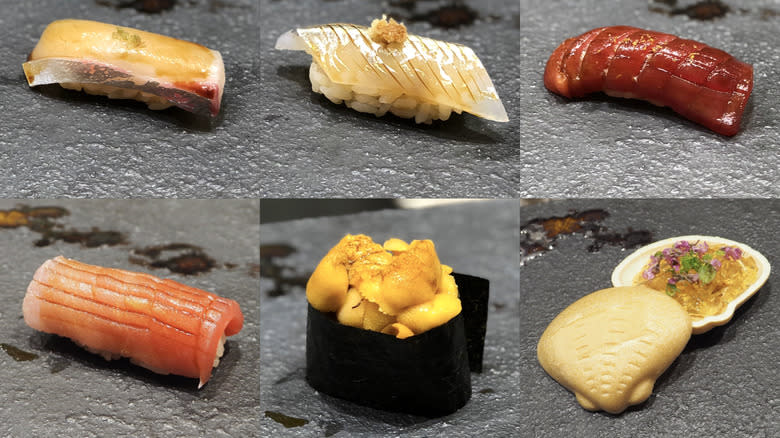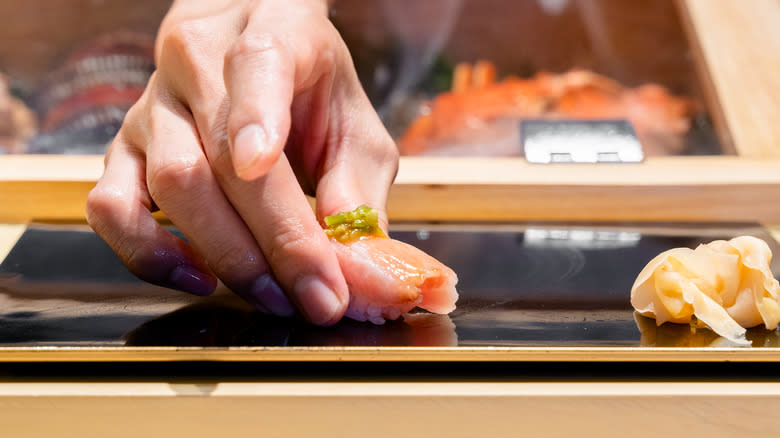The Experience Of Dining Omakase, Explained

We all know sushi and sashimi are Japanese dishes you need to try at least once, and if you're looking for an intimate dining experience where you'll feel like royalty sampling many types of sushi and sashimi crafted from the most passionate and creative depths of a sushi chef's heart, look no further than dining omakase. When you partake in an omakase experience, you leave decision fatigue at the door: The chef and restaurant will pick and choose all of the sushi or sashimi pieces for you. You can still look at a menu, but you don't really have a choice regarding what you'll be eating throughout the meal (unless, of course, you have dietary restrictions). In Japanese, omakase (or おまかせ) roughly translates to "putting trust in you" or "leaving it up to you."
How omakase is served depends on the chef and the restaurant, so your omakase experience in a sushi restaurant in NYC will likely differ from your experience in Seattle, for example. One of Japan's most notable omakase chefs, Jiro Ono, would look at his patrons and size portions differently depending on whether the patron was a woman or a man. Men often got bigger pieces of fish served with their sushi when they dined at Jiro's. One thing is certain: Omakase dining is almost always a unique experience and can often be pricier. When trying it out for the first time, it's best to brush up on some tips for ordering omakase at a Japanese restaurant.
Read more: 15 Different Ways To Cook Fish
Omakase Dining Will Transform You Into A Sushi Snob

During a typical omakase dining experience, you can expect to enjoy a multi-course meal ranging from 10 to 20 courses. Sushi by Scratch, an omakase restaurant chain across America from Seattle to Miami, is famous for its 17-course omakase, but don't expect to get large portions of food with each course. A course may include a small appetizer, such as a single serving of simple miso soup or chawanmushi. Then, each piece of sushi before you is counted as a course. And finally, there is a light dessert, typically tamago (or egg) sushi.
If you choose to sit at the sushi bar (and we recommend you do to get the best experience out of omakase dining), the sushi chef will hand you each course as they make it. If you sit in the restaurant's dining room, you will likely get most of your courses served on one platter. Typically, you start with lighter dishes, like leaner, sweeter, seasonal fish, while later courses are heartier, like buttered King-crab sushi or the fattier tuna toro.
Omakase dining is often a memorable experience that may turn you into somewhat of a sushi snob and connoisseur. At the sushi bar, you can chat with the sushi chef and watch as they masterfully slice the fish and handcraft the sushi. Be mindful of your dining etiquette and thank your chef after an exquisite meal.
Read the original article on Tasting Table.

 Yahoo Sports
Yahoo Sports 